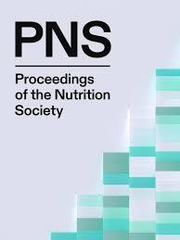No CrossRef data available.
Article contents
Mapping food security influencers and discourse: a social network analysis of Twitter conversations in Australia
Published online by Cambridge University Press: 21 May 2025
Abstract
Food security is a crucial issue for policymakers, practitioners, and researchers(1). Network analysis, which examines complex systems and relationships(2), can provide valuable insights into food security through the interactions of individuals and organisations. This study aimed to explore the Twitter network discussing food security in Australia, focusing on user connections and key influencers. Data was collected from 2019 to 2021 using the Twitter API and Python software(3). Eligible tweets were those sent by Australian users, in English, and containing at least one food security-related search term. From this data the interactions (re-tweets, replies and quote tweets) between users was extracted, including only users who interacted with another user from the dataset at least twice. Social network analysis was conducted using the software Gephi(4) where interactions (edges represented as lines) between users (nodes represented as circles) were visualised. Sentiment and topic analysis of the tweets were also used to explore what was being said and in what tone(3). The network comprised n = 2,172 Twitter users and 3,304 connections. However, 394 connections (11.9%) were self-interactions, contributing to a low network density of 0.001. The median number of users each user connected with (degree) was 1 (25th, 75th percentiles 1, 2), ranging from 1 to 346. The most common topic discussed by n = 589 users (27.1%) was global food production and the most common sentiment was positive (n = 1,228 users, 56.5%). High modularity (0.740/1) indicated the network could be divided into distinct communities that had dense connections within but not necessarily outside of their community. There were 353 communities, with 209 (59.2%) of these communities containing only one user. The largest ten communities represented 71.9% of the network, with the largest community (n = 530 users) focusing on Australian food insecurity and food banks, discussed from a political and refugee perspective with a generally negative tone. Betweenness centrality identified key influencers who connected various parts of the network. The top 20 influential users included seven non-profit organisations, seven academics, three advocacy groups, two political accounts, and one government account. Non-profit organisations often interacted with each other, while academics were mainly clustered in the same community. High-degree users, who had the most direct connections (≥ 35 connections), were predominantly non-profit organisations, with fewer academic and more political accounts than those with high betweenness centrality (≥ 12,000). Despite the overall low network density due to isolated users and relatively insular communities, some individuals exhibited extensive connections, highlighting their central role and potential influence in Twitter discussions. Future research could examine how these dynamics evolve and explore strategies to enhance connections, thereby enabling diverse social media users to better influence public discourse and ultimately policy on food security issues.
Information
- Type
- Abstract
- Information
- Copyright
- © The Author(s), 2025. Published by Cambridge University Press on behalf of The Nutrition Society


